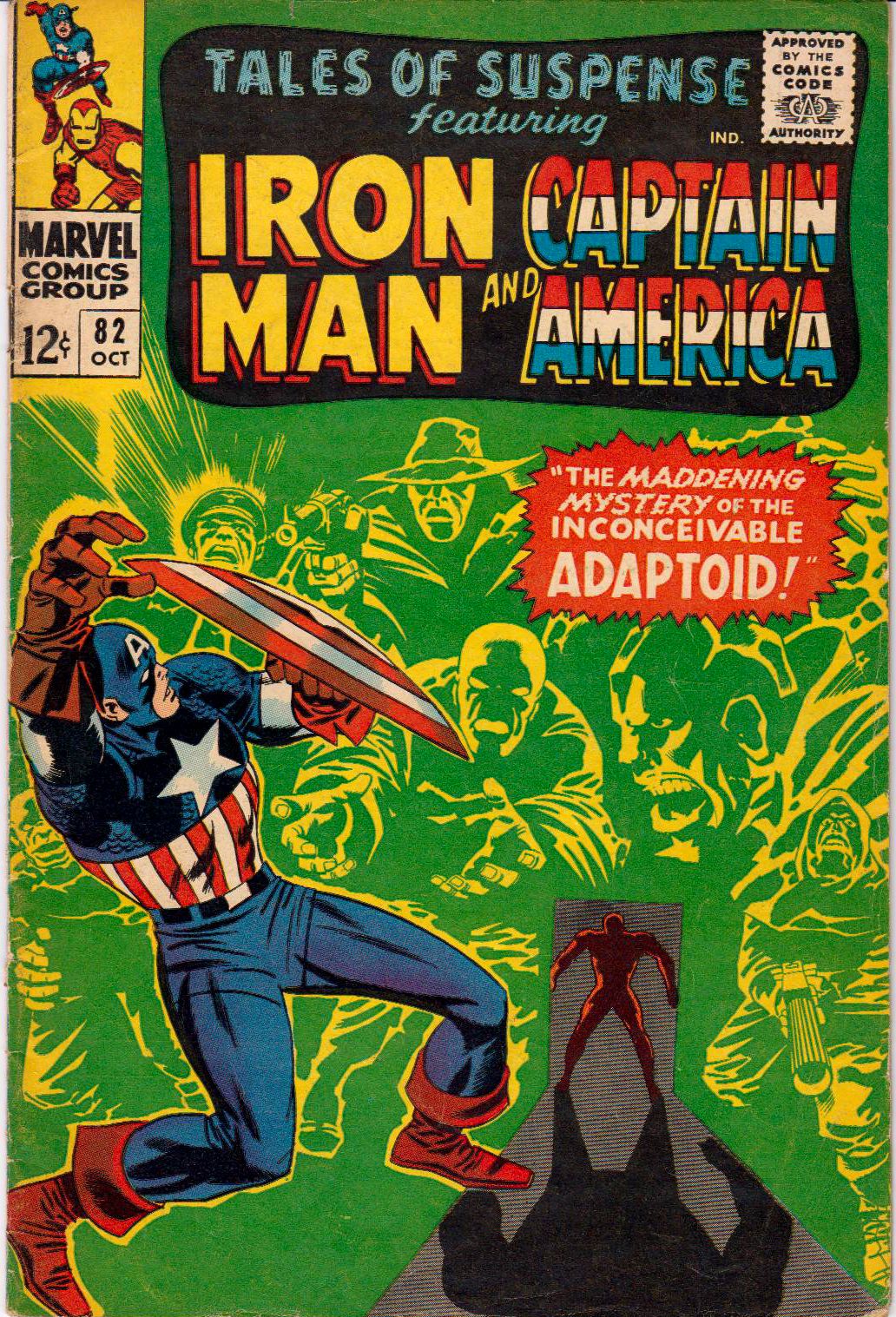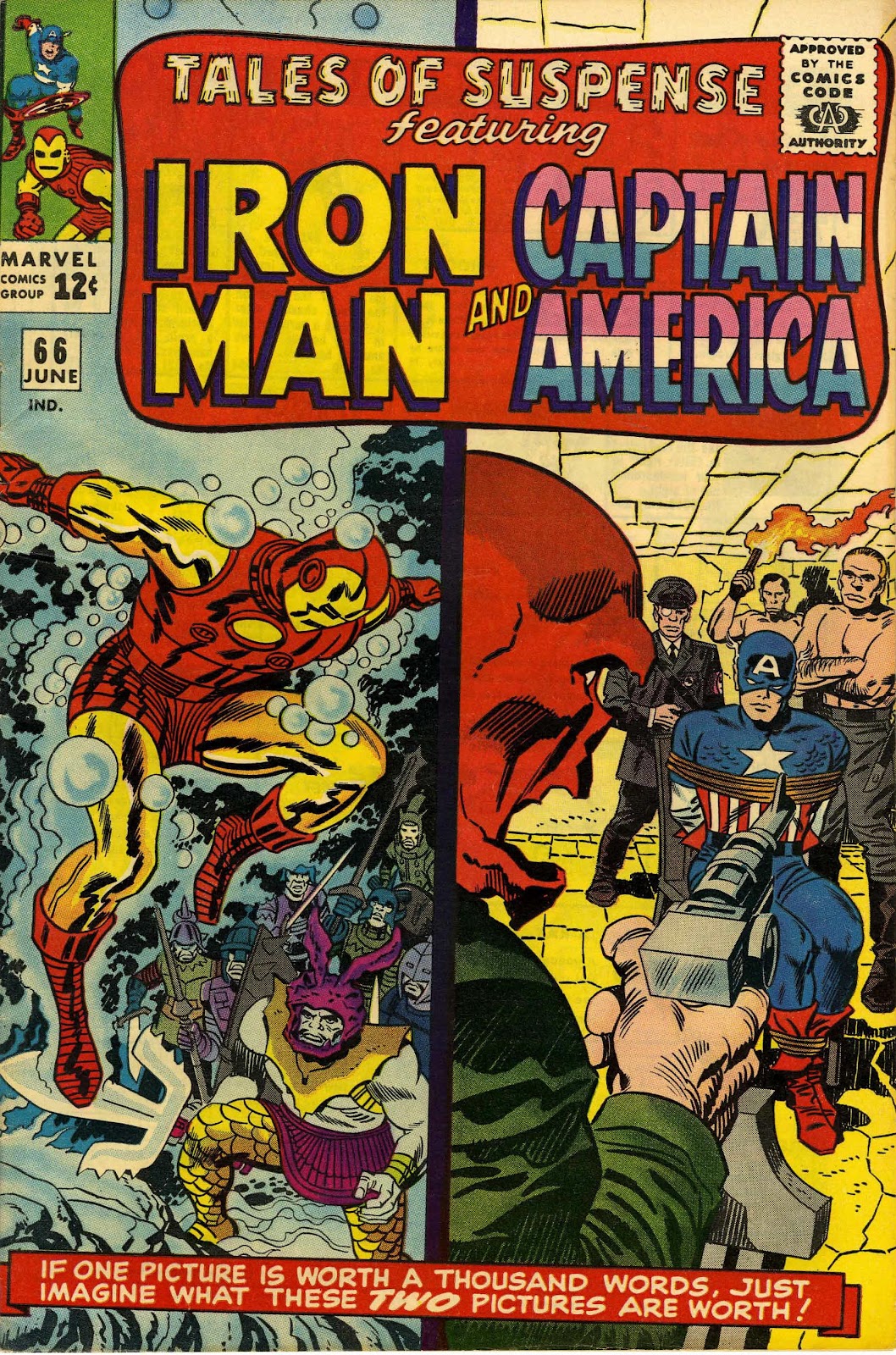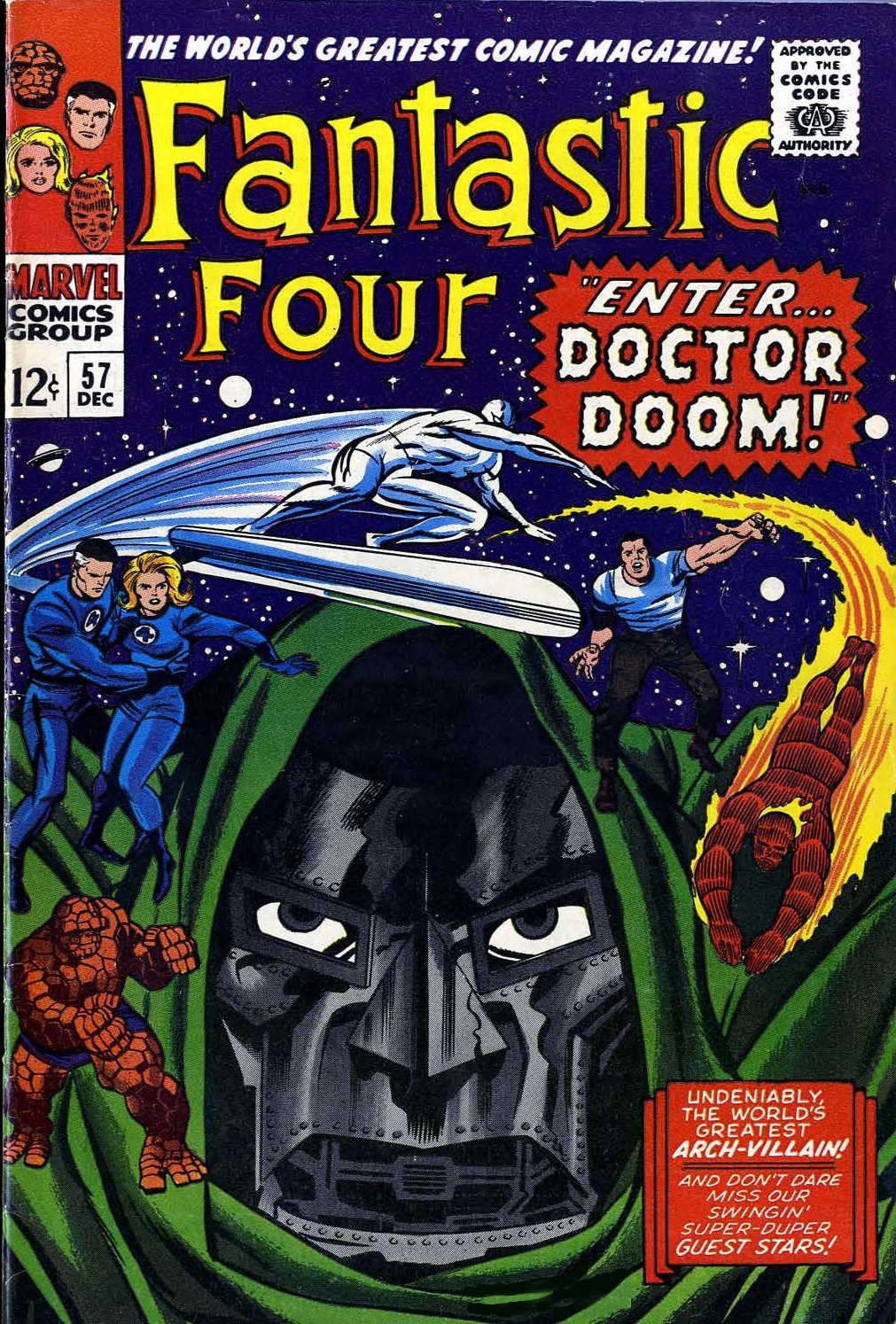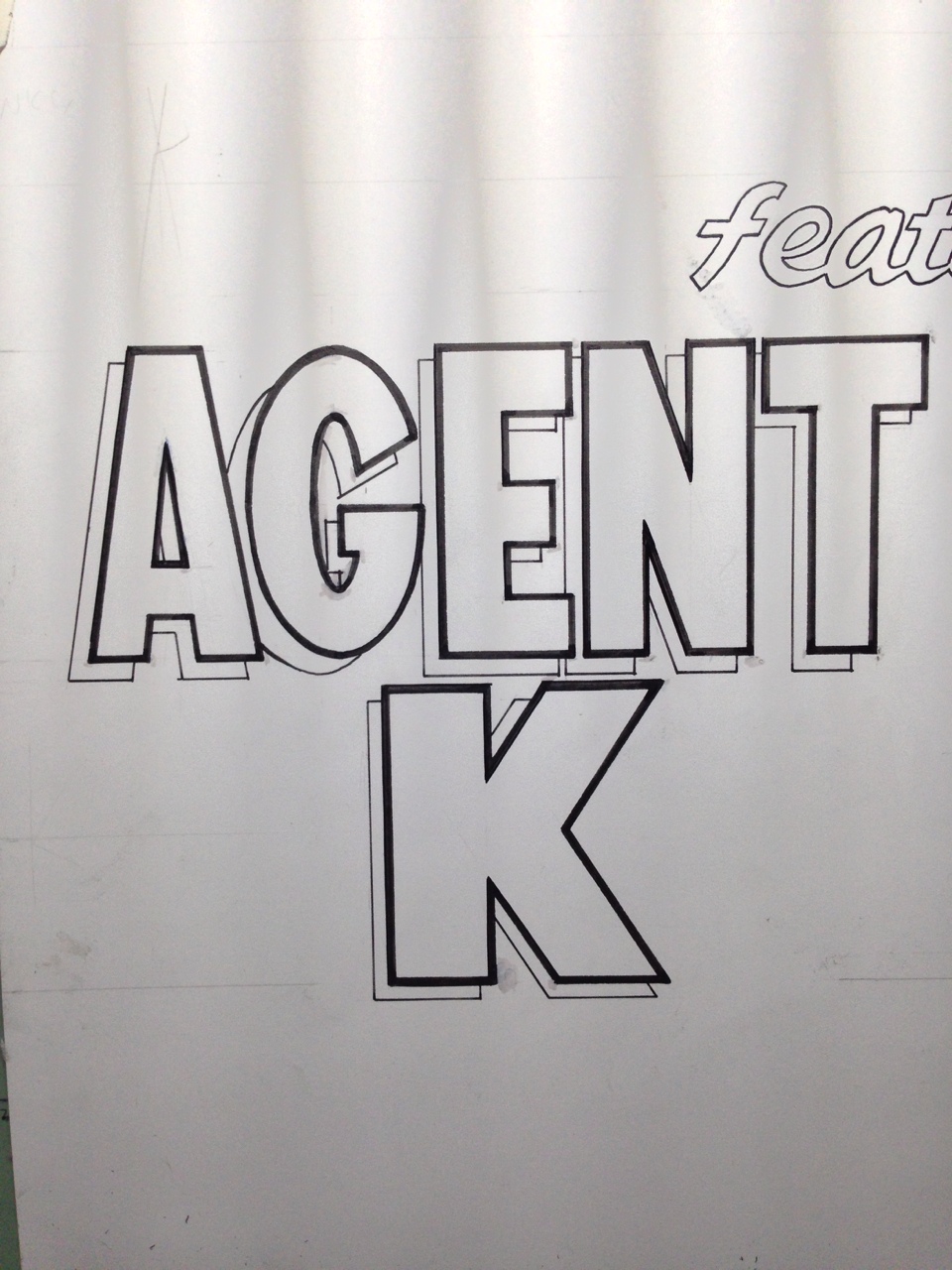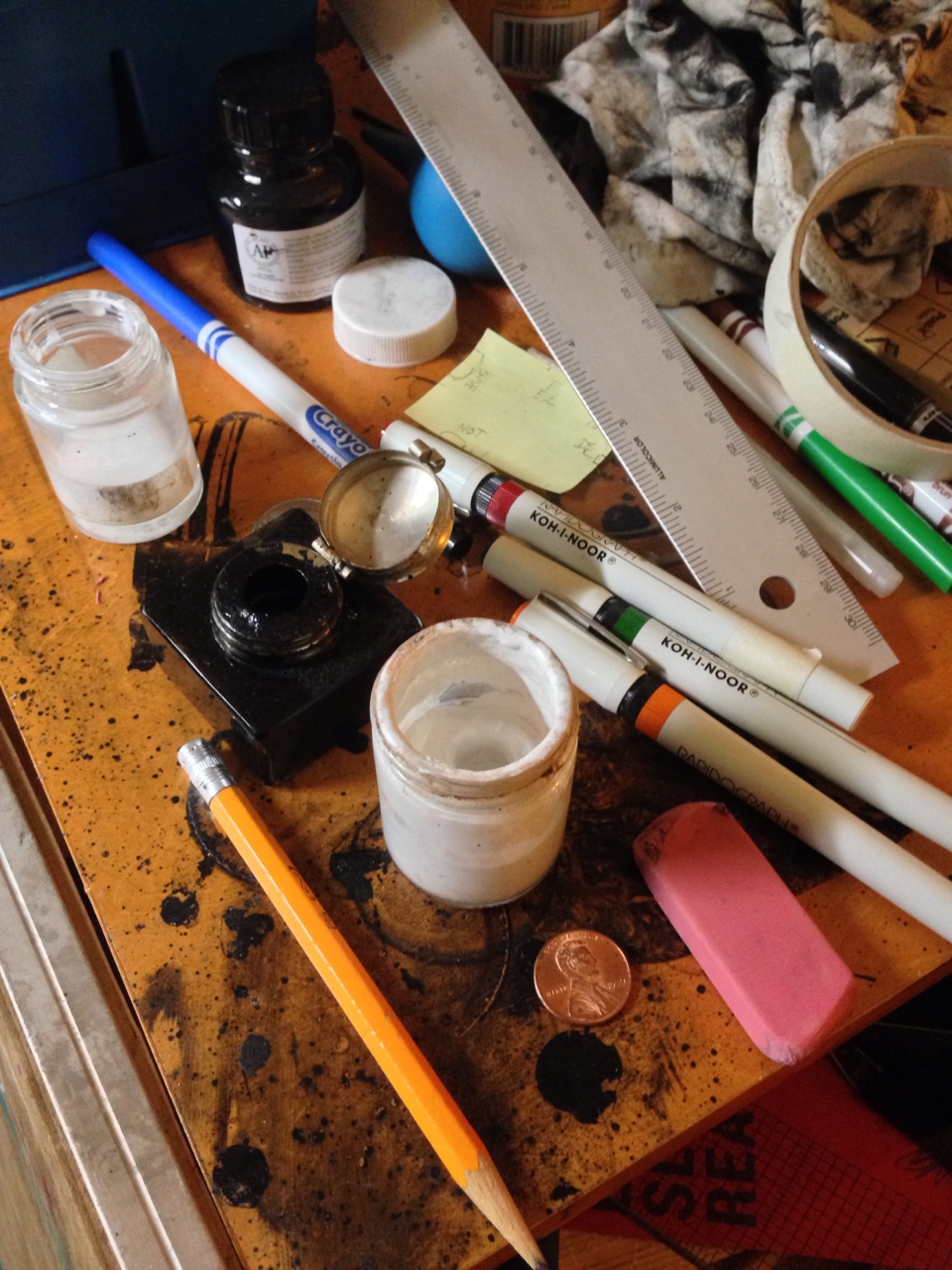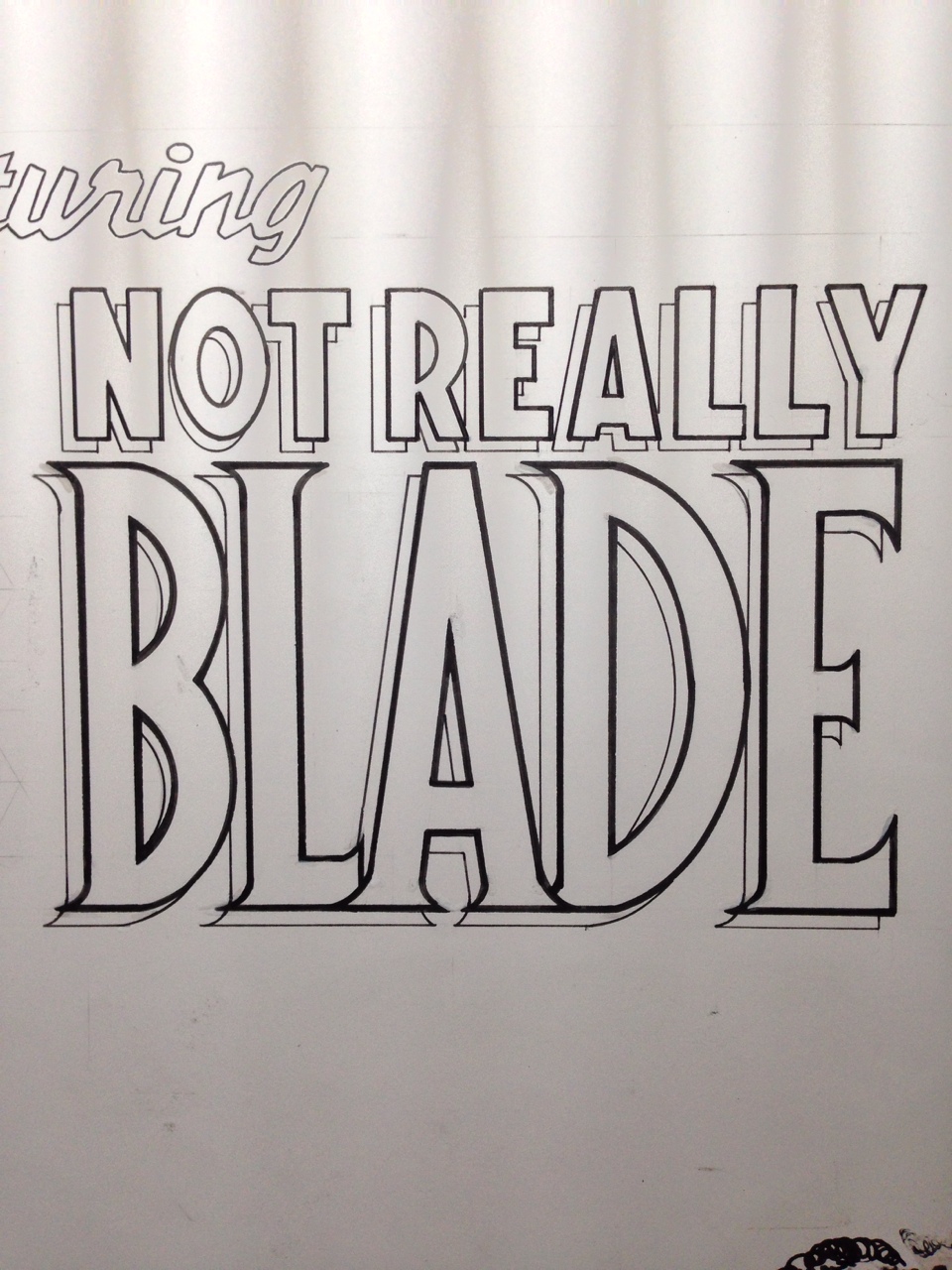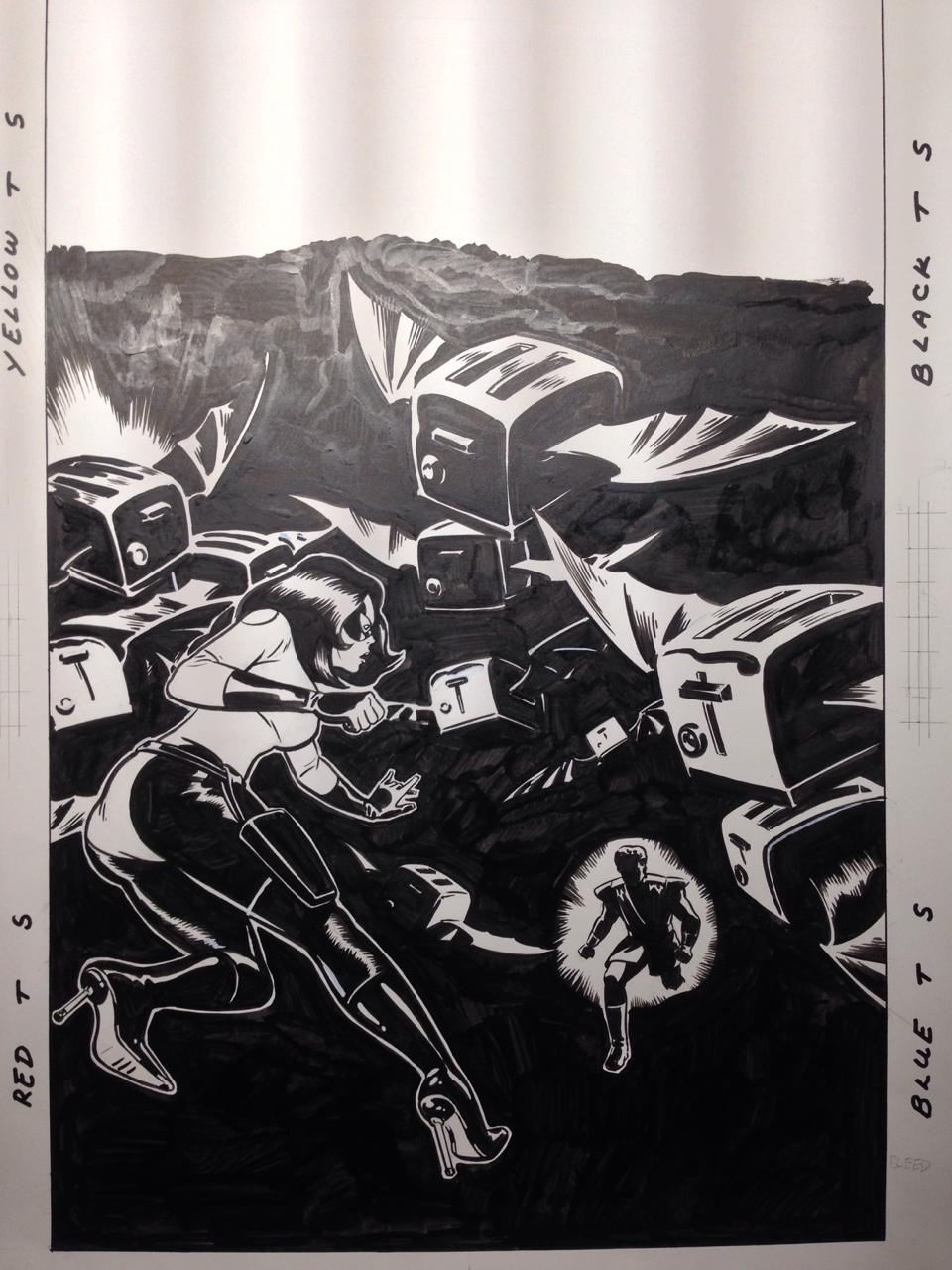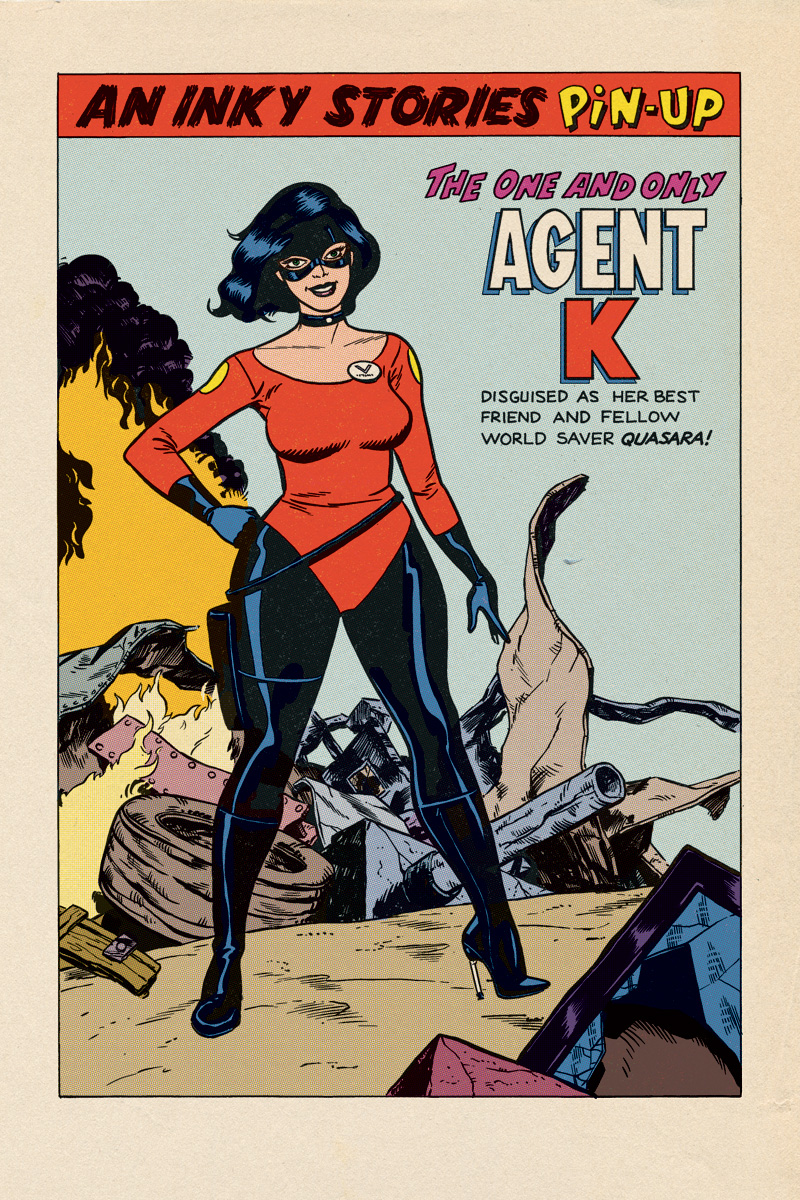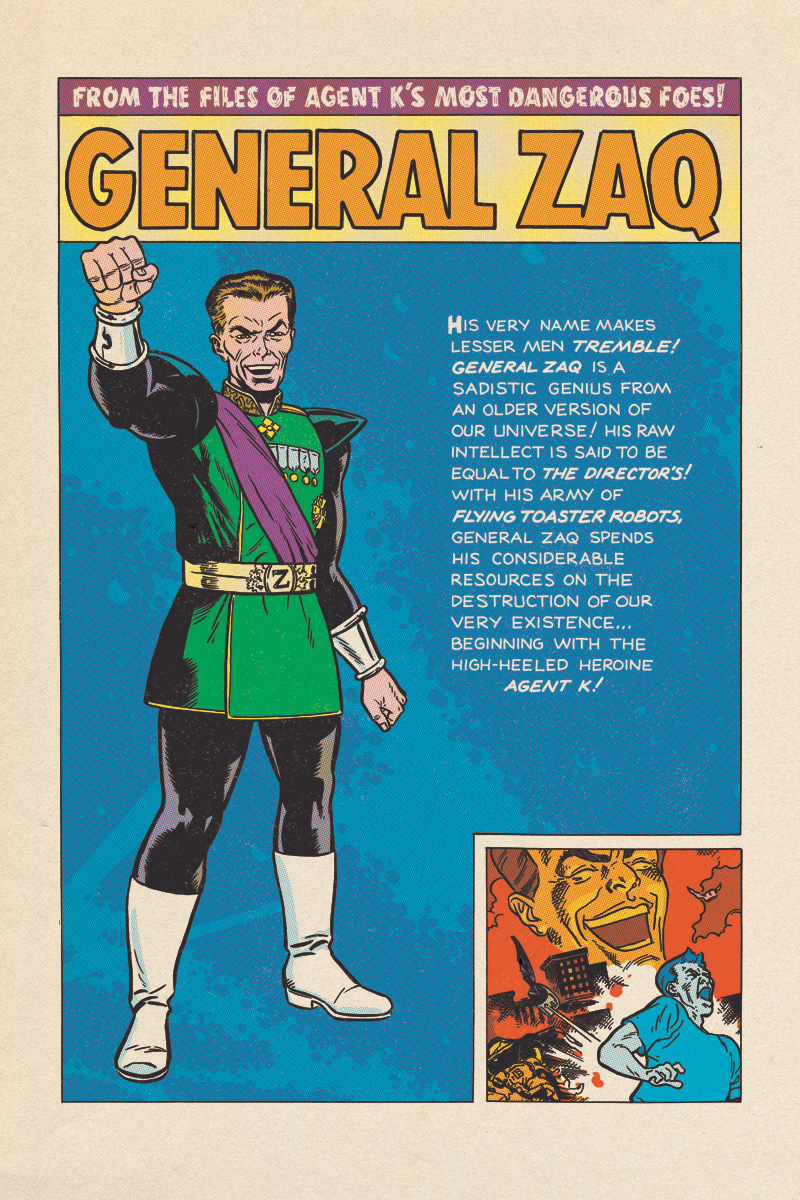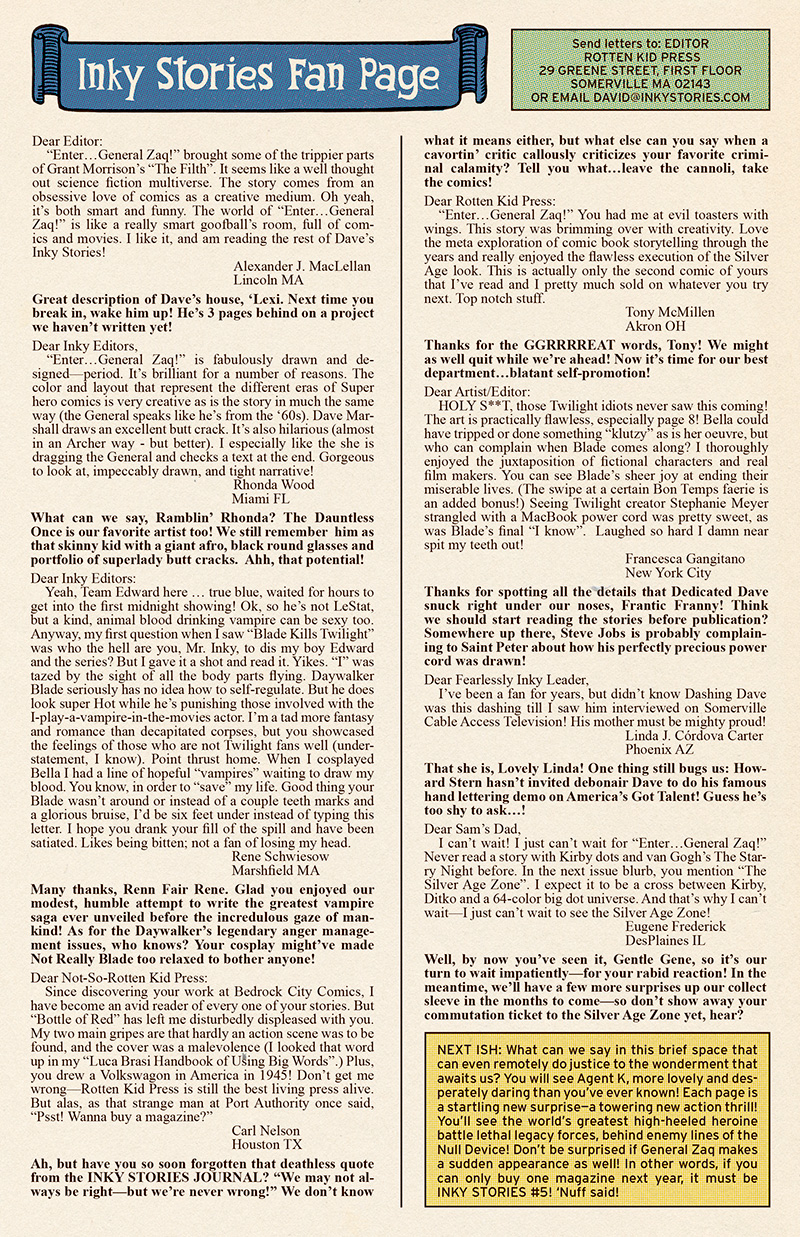Enter...General Zaq!
Agent K tries to stop an army of alien killer robots from conquering Earth. Can our high-heeled heroine save the day with color dots and a good right cross? In the Silver Age Zone, anything's possible.
Story Notes
Beneath the plot, "Enter...General Zaq!" is an analysis of modern and classic American superhero comics. Today's comics have much better production values than those of my youth, but most are too dark and poorly drawn for my taste. To be fair, the gem-to-crap ratio is probably the same now as it was in the 1970s.
The art is designed to look like it came from the same person in different eras. The modern scenes are based on All-New X-Men (Stuart Immonen, Wade Von Grawbadger, Marte Garcia and Virtual Calligraphy). The classic scenes are my personal mash-up of Silver Age Marvel (Wally Wood, John Buscema, Curt Swan, Joe Sinnott and Steve Ditko, lettered by Artie Simek).
Both eras have completly different ways of writing (thought balloons vs. first-person narrator), drawing conventions (hair, action lines, explosions, feathering), color (64-color pallet and hand-separations vs. gradient-crazy Photoshop) and lettering (hand vs. fonts). In particular, mimicking the 4-color separation process of Silver Age comics was time consuming. But I've been doing that for a while. If I've done my job well, you'll think this was done by the same person in two different eras.
Our High-Heeled Heroine
This one's a bit convoluted. In the thumbnail phase, the first draft of this was a 3-page Film Noir. The male hero was being chased across Manhattan rooftops by unspecified authorities. He leads them to the "Silver Age Room" of a ratty Times Square hotel. There, he uses the colors as weapons and escapes. THE END.
I then realized every character was a man! Decided to change the protagonist to Agent K, bad-ass lady of "The Null Device". "Enter...General Zaq!" takes place soon after "The Null Device". I wanted to draw her in a different outfit, with a mask. There's something alluring about a lady saving the world in 5-inch metal spike heel boots. Somehow -- probably the result of a caffeine-fuled writing session -- this led to the convoluted plot of Agent K covering Quasara's vacation.
This also changed the genre from Film Noir to Superhero, allowing the Silver Age color battle to look like Steve Ditko's Doctor Strange. The fight and flashback scenes were expanded, increasing the page count from 3 to 11, matching Marvel's 2-story books of the 1960s.
Mo' Meta Blues
The half-page ad on the bottom of page 9 is based on those in Silver Age comics. Appearing in content pages probably meant they sold too many ads for a single issue.
General Zaq is based on the Stan Lee/Jack Kirby Doctor Doom, whose behavior and attitute seem to be based on Bram Stoker's Dracula. Both are aristocratic sadists who talk more than they ultimately delivered. Most of General Zaq's dialog comes directly from the Stan Lee/Jack Kirby run on Fantastic Four. His uniform and hair are based on the Shaw of Iran.
The narration of today's comics is different. Old-school narration is either objective, editorial or -- with Frank Miller's '80s work -- first person protagonist, past tense. (Which was always odd. If the first-person protagonist lives to narrate the story, where's the drama?) The modern narrator's voice is first person, present tense, describing the action as we see it... like a conversation or DVD commentary.
The robots are based on 1990s Flying Toaster screensaver icons. My version combines the classic (metal with feathered wings) with a steampunk variation (wood with bat wings). I planned on individualizing the robots based on retro and modern toasters, but ran out of time.
Closing Thoughts
Presenting the look of classic and modern comics in the same story was fun. Angry, frustrating and time-consuming fun. Any twit can emphasize everything wrong with pre-digital printing. "Enter...General Zak!" is an honest, accurate side-by-side comparison of both eras.
Dave M!, emulating obsolete techniques with modern technology since 1995.

